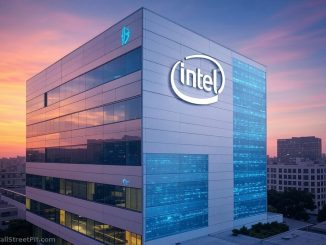- Ben Bajarin of Creative Strategies sees Intel’s (INTC) recovery hinging on its foundry innovations, like PowerVia and transistor advancements, and its undervalued CPU role in AI infrastructure, though he warns it’s a long-term play toward the decade’s end.
- Intel Foundry’s core IP and manufacturing differentiators could drive significant value, potentially through a deal, despite current valuations focusing on assets rather than technological potential.
- CPUs remain crucial for AI latency and orchestration, with Intel poised to benefit from designing AI-specific chips, complementing its foundry ambitions, but investor patience may wane given the extended timeline.

Ben Bajarin, CEO and principal analyst at Creative Strategies, joined YF’s ‘Morning Brief’ recently to unpack Intel’s (INTC) complex position in the artificial intelligence landscape, spotlighting both its potential for recovery and the formidable challenges it faces. Intel, a legacy chipmaker, has struggled to keep pace with rivals like Nvidia (NVDA) and Advanced Micro Devices (AMD), who have seized the AI boom with specialized offerings, yet Bajarin sees a viable path forward rooted in the company’s dual strengths: its foundry capabilities and its undervalued role in AI infrastructure. He emphasized that Intel’s story is one of long-term promise rather than immediate gratification, a timeline that tests investor patience in an industry accustomed to rapid shifts.
Bajarin pointed to Intel’s foundry operations as a critical piece of the puzzle, arguing that the market has yet to fully appreciate the value of its technological assets. Intel Foundry’s development of core intellectual property, including innovations like PowerVia and backside power delivery, alongside advancements in transistor design, positions it as a contender in the manufacturing space, even as rumors swirl about potential joint ventures with TSMC and Broadcom (AVGO). He noted that while some valuations focus narrowly on Intel’s tangible assets, the underlying IP and manufacturing differentiators – comparable to what TSMC offers its clients – could command a premium if properly leveraged, suggesting a sum-of-the-parts narrative that might culminate in a strategic deal.
Equally significant, Bajarin highlighted the enduring relevance of Intel’s CPU business in the AI ecosystem, a point often overshadowed by the hype surrounding GPUs and custom ASICs. He explained that CPUs remain vital for reducing latency and managing the orchestration layer in AI infrastructure, areas where Intel and AMD are poised to capitalize with purpose-built designs. Unlike the legacy CPUs currently in use, next-generation offerings tailored for AI could unlock higher pricing power and a more prominent role for Intel, complementing its foundry ambitions. However, he cautioned that this transformation – spanning both product innovation and foundry expansion – won’t materialize overnight, projecting a recovery horizon closer to the decade’s end, a protracted journey that risks exhausting investor goodwill in a fast-moving market.
WallStreetPit does not provide investment advice. All rights reserved.
- Bulenox: Get 45% to 91% OFF ... Use Discount Code: UNO
- Risk Our Money Not Yours | Get 50% to 90% OFF ... Use Discount Code: MMBVBKSM
Disclaimer: This page contains affiliate links. If you choose to make a purchase after clicking a link, we may receive a commission at no additional cost to you. Thank you for your support!





Leave a Reply